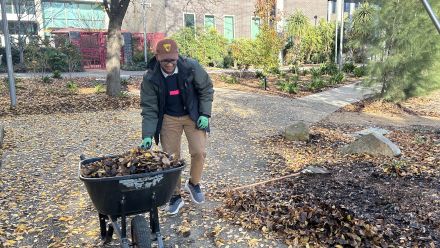Body cams alone not enough to prevent police violence
We don’t want to be leading policymakers down the wrong path by suggesting BWCs are enough when really we need to be looking at broader reforms.
Experts are calling for broader police reforms after new analysis from The Australian National University (ANU) and the University of Waterloo in Canada raised serious questions about the effectiveness of body-worn cameras (BWCs) at preventing police wrongdoing.
The international team of experts analysed studies that captured the impact of BWCs on police violence around the world. The research, published in Critical Social Policy, reveals inconsistencies in how effective BWCs are at promoting better police practice.
It follows worldwide outrage sparked by instances of police brutality toward people of colour, including the murder of George Floyd at the hands of US police last year.
"We noticed a trend in which police departments across the US and Canada were rapidly adopting body-worn cameras alongside statements that they would enhance police accountability in the aftermath of reported police violence against people of colour," Professor Kate Henne, Director of the ANU School of Regulation and Global Governance, said.
"As a result, we reviewed all of the literature around police body-worn cameras and conducted a systematic review into their effectiveness. We found the evidence is mixed.
"We don't want to be leading policymakers down the wrong path by suggesting BWCs are enough when really we need to be looking at broader reforms that address systemic inequality and include community-led responses.
"For example, that could include investing in non-police response teams and areas that have been underfunded for years, including support programs for mental health, housing, healthcare and after-school initiatives."
Professor Henne said the studies of BWCs as a police tool to improve transparency and accountability use a "narrow" set of research methods, and many in favour of BWCs' effectiveness are inconsistent.
"Assessments of the effectiveness of BWCs tend to use evaluation methods that focus only on the interaction between the police officer and the citizen," she said.
"They do not capture the context of the interactions or examine how BWC footage is used beyond these interactions. They also aren't consulting communities who disproportionately experience higher rates of police violence in the way they've asked for."
According to Professor Henne, the George Floyd case is a reminder of the "urgent need" to get the use of BWCs right.
"In the wake of George Floyd's death - in which body-worn camera evidence was used in Derek Chauvin's murder trial - people in Minnesota and across the US demanded institutional and structural reform to the system," she said.
"To do that, we have to be talking to and working with communities. Most of the research we reviewed is doing the opposite and should not be used on its own to justify these reform measures."
Co-author Krystle Shore, a PhD scholar at the University of Waterloo, argues a higher police presence and the use of surveillance to combat crime could have unintended consequences.
"The stakes are too high to get this wrong. In the US and elsewhere, we have seen instances of increasing police surveillance capabilities being used to target black, First Nations and immigrant communities. Presenting BWCs as a neutral response to police misconduct negates the many other ways that surveillance technologies can be used," she said.
"Surveillance technologies are increasingly justified by authorities to address social problems beyond policing such as, for example, in response to the coronavirus pandemic. It is crucial that we fully understand the potential for harm associated with these technologies before classifying them as blanket solutions."
Professor Henne supports community-led justice programs instead of simply relying on new surveillance technologies for police.
"Research by Dr Amanda Porter on community-run Indigenous patrols in New South Wales show that different types of justice systems can help keep communities safe and prevent contact between Indigenous young people and law enforcement," Professor Henne said.
"Unfortunately, there is a tendency of criminologists and policymakers to attempt to reform the criminal justice system using strategies that don't consider community-led initiatives as viable solutions. The emphasis on BWCs over other possibilities offers a similar case in point."
This new analysis into BWC research was conducted by ANU Professor Kate Henne, ANU PhD scholar Jenna Imad Harb and PhD scholar Krystle Shore.


